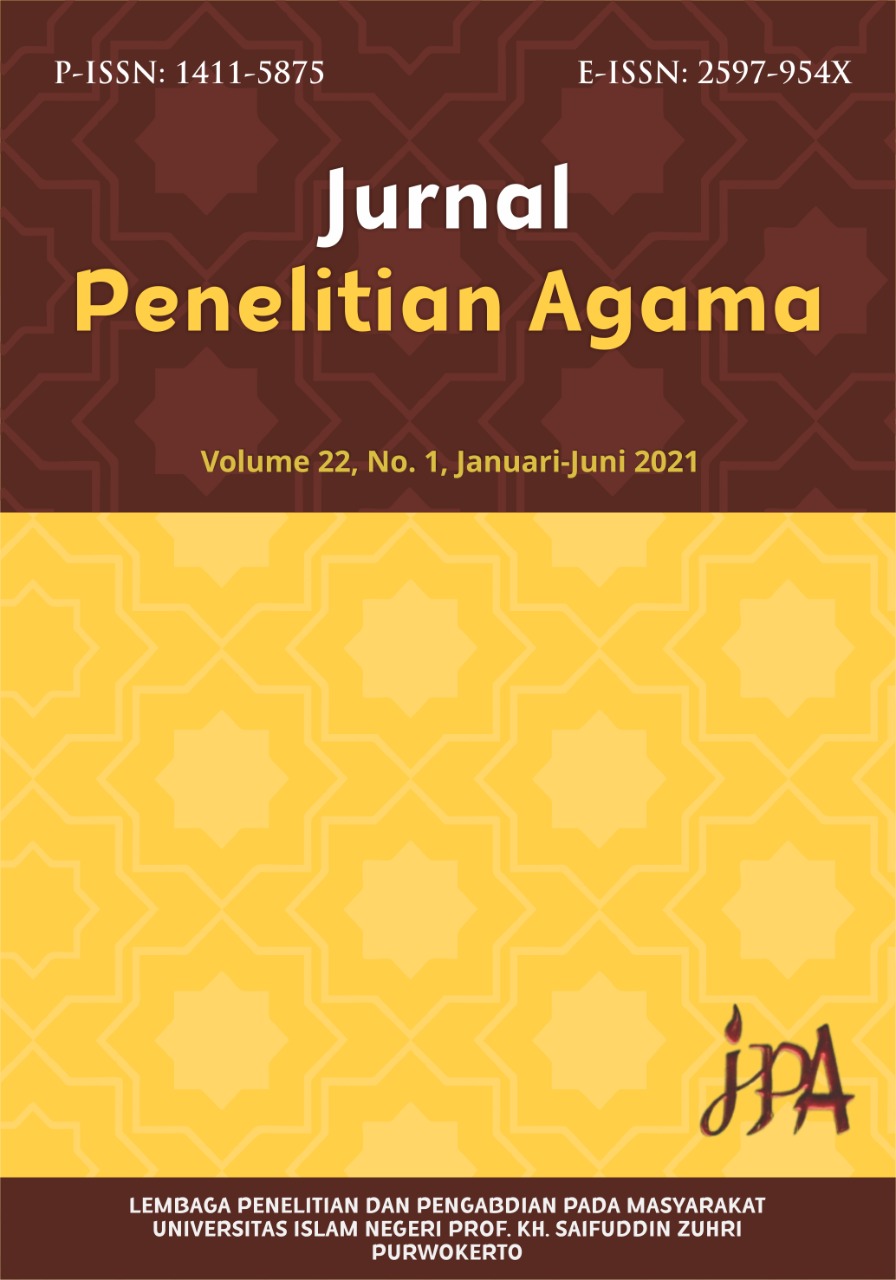Implikasi Bayang IstiwaaTerhadap Penentuan Awal Waktu Sholat
DOI:
https://doi.org/10.24090/jpa.v22i1.2021.pp1-19Keywords:
istiwa', bayang istiwa', panjang bayangan, awal waktu sholatAbstract
The formulation of prayer times is based on the apparent daily circulation of the Sun by determining when the Sun occupies a certain position. One of these positions when the Sun is perpendicular to the position of the observer is called the Solar Culmination Time or called istiwa. Time istiwa defined as the starting point of the reckoning the beginning of prayer time with a time angle value equal to zero. One of the phenomena in istiwa’ is the shadow of istiwa which is used as a guide in making sundials. The phenomena of the 'shadows' has many variants depending on the latitude of the place and the declination of the Sun. The number of variants of changes in the condition of the idols shadow becomes an interesting part to be studied and researched, especially the position of the idols time as the starpoint in the initial reckoning of prayer time. In addition, the implication of the shadow istiwa phenomenon is closely related to the beginning of Zuhr and Asr, which use the sun's shadow in their calculations. This paper will examine the implications of istiwa shadows on the initial determination of prayer times which will be more focused on changes in the phenomenon of istiwa'i shadows to variations in latitude and sun declination. The research method uses qualitative methods with an astronomical approach. The data obtained were processed using geometric techniques to obtain data variants. The results of data processing were analyzed with descriptive comparisons to get a more comprehensive picture. The results of the study show that with changes in the variation in the value of the latitude and declination of the Sun, a change in the phenomenon of the length of the images' image is obtained as follows: Without a shadow; b. The image does not exceed the length of the object; c. The image 'is equal to the object's length; d. Istiwa length 'is longer than the object length; e. Dark. The implication is in the formulation of Zuhr and Asr prayer times which refer to the length of the idols shadows experiencing problems. Especially areas with latitude > 45° degrees when declination is negative and latitude> -45° when declination is positive.References
Akbar, Reza, “Perhitungan Waktu (Time Calculation) Fenomena Tanpa Bayangan di Kota Sambas Kalimantan Barat”, Al Marshad: Jurnal Astronomi Islam dan Ilmu-Ilmu Berkaitan, Vol. 5, No. 2 Desember 2019
Al-Bantani, M. N. ibn U. al-J. (2011). Kasyifah al-Syaja Syarhu Safinah an-Najah. Daar Ibn Hazm.
Budiwati, A. (2016). Tongkat Istiwa’, Global Positioning System (GPS) dan Google Earth untuk Menentukan Titik Koordinat Bumi dan Aplikasinya dalam Penentuan Arah Kibla. Al-Hikam, 26.
Fadhilah, L. N. (2020). Akurasi Awal Waktu Zuhur Perspektif Hisab dan Rukyat, al-Marshad:Jurnal Astronomi Islam dan Ilmu-Ilmu Berkaitan. 6.
Hambali, S. (2011). Ilmu Falak 1:Penentuan Awal Waktu Sholat dan Arah Kiblat Seluruh Dunia. Program Pascasarjana UIN Walisongo Semarang.
Kamalludin, Iqbal, Uji Akurasi Penentuan Deklinasi Matahari dengan Menggunakan I-Zun Dial, El-Falaky: Jurnal Ilmu Falak, Vol. 3, No. 2 Tahun 2019.
Muhajir, Analisis Pemikiran Saadoe’ddin Djambek tentang Waktu Shalat di Daerah Abnormal (Kutub), Madinah: Jurnal Studi Islam, Vol 5, No. 2 Desember 2018.
Nawawi, A. S. (2010). Ilmu Falak Praktis (Waktu Sholat, Arah Kiblat dan Kalender). Aqaba.
Qulub, S. T. (2017). Ilmu Falak: Dari Sejarah ke Teori dan Aplikasi. Rajawali Press.
Rizalludin, Pemikiran Thomas Djamaluddin tentang Salat dan Puasa di Daerah Dekat Kutub, Al-Marshad: Jurnal Astronomi Islam dan Ilmu-Ilmu Berkaitan, Juni 2018
Taman, B. dan F. R. (2019). Penentuan Waktu Salat Zuhur dengan Batas Awal Zawal al-Syams. Wacana Hukum, Ekonomi Dan Keagamaan, 6.
Al-Bantani, M. N. ibn U. al-J. (2011). Kasyifah al-Syaja Syarhu Safinah an-Najah. Daar Ibn Hazm.
Budiwati, A. (2016). Tongkat Istiwa’, Global Positioning System (GPS) dan Google Earth untuk Menentukan Titik Koordinat Bumi dan Aplikasinya dalam Penentuan Arah Kibla. Al-Hikam, 26.
Fadhilah, L. N. (2020). Akurasi Awal Waktu Zuhur Perspektif Hisab dan Rukyat, al-Marshad:Jurnal Astronomi Islam dan Ilmu-Ilmu Berkaitan. 6.
Hambali, S. (2011). Ilmu Falak 1:Penentuan Awal Waktu Sholat dan Arah Kiblat Seluruh Dunia. Program Pascasarjana UIN Walisongo Semarang.
Kamalludin, Iqbal, Uji Akurasi Penentuan Deklinasi Matahari dengan Menggunakan I-Zun Dial, El-Falaky: Jurnal Ilmu Falak, Vol. 3, No. 2 Tahun 2019.
Muhajir, Analisis Pemikiran Saadoe’ddin Djambek tentang Waktu Shalat di Daerah Abnormal (Kutub), Madinah: Jurnal Studi Islam, Vol 5, No. 2 Desember 2018.
Nawawi, A. S. (2010). Ilmu Falak Praktis (Waktu Sholat, Arah Kiblat dan Kalender). Aqaba.
Qulub, S. T. (2017). Ilmu Falak: Dari Sejarah ke Teori dan Aplikasi. Rajawali Press.
Rizalludin, Pemikiran Thomas Djamaluddin tentang Salat dan Puasa di Daerah Dekat Kutub, Al-Marshad: Jurnal Astronomi Islam dan Ilmu-Ilmu Berkaitan, Juni 2018
Taman, B. dan F. R. (2019). Penentuan Waktu Salat Zuhur dengan Batas Awal Zawal al-Syams. Wacana Hukum, Ekonomi Dan Keagamaan, 6.
Downloads
Published
2021-06-17
How to Cite
Hasan, A. (2021). Implikasi Bayang IstiwaaTerhadap Penentuan Awal Waktu Sholat. Jurnal Penelitian Agama, 22(1), 1–19. https://doi.org/10.24090/jpa.v22i1.2021.pp1-19
Issue
Section
Articles
License
Authors who publish with this journal agree to the following terms:
- Authors retain copyright and grant the journal right of first publication with the work simultaneously licensed under a Creative Commons Attribution-NonCommercial-ShareAlike 4.0 International License that allows others to share the work with an acknowledgement of the work's authorship and initial publication in this journal.
- Authors are able to enter into separate, additional contractual arrangements for the non-exclusive distribution of the journal's published version of the work (e.g., post it to an institutional repository or publish it in a book), with an acknowledgement of its initial publication in this journal.
- Authors are permitted and encouraged to post their work online (e.g., in institutional repositories or on their website) prior to and during the submission process, as it can lead to productive exchanges, as well as earlier and greater citation of published work (See The Effect of Open Access).










